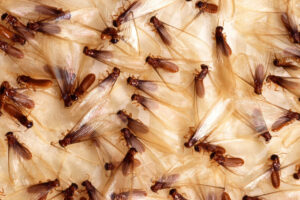If you suspect that termites have infested your home or business, you will need to protect your property. You can prevent infestations by learning about termites’ habits and identifying treatments that will effectively eradicate them. Termite damage can be difficult to date, so finding a treatment that will eliminate the termites is essential. There are several different treatments available, and you should look for the ones that best match your budget.

While there are several options available to protect your home from termites, it is best to contact Pest Control Knoxville TN to perform the necessary treatment. Termite control requires that you treat the soil around the foundation wall and the supports under the house. Termites cannot get into a foundation wall if the soil is treated. Some companies still use traditional methods such as treating the entire foundation wall, while others use a spot treatment. While spot treatments are less expensive than full treatments, they do not address the root cause of the infestation.
Termites usually enter your home through the structural wood that surrounds the foundation walls. Termites build shelter tubes that bridge the wood to the soil and a home’s foundation walls. In addition to the foundation wall, these tubes often enter the building through cracks and voids. Although these tubes may occasionally penetrate the building’s structure, these areas are prone to termite infestations. In some cases, a professional exterminator will use a combination of the two methods.
While traditional chemicals can kill the termites in a home, they also can be used to discourage insects from returning. In some cases, repellent termiticides may not be effective, and a homeowner should consult a pest management professional to avoid these chemicals. If you choose the latter option, you may want to consider the added benefits of a termite control contract. A guarantee is a major advantage for both parties.
Another sign of termite infestation is the presence of mud tubes in the interior or exterior walls. These tubes are indicative of an aboveground infestation. The termites travel up from the soil to the building. These mud tubes may contain materials other than soil. When an infestation is severe, it may require the removal of interior walls or siding to access the interior. Fortunately, the most effective treatment for termites is one that addresses the root cause of the problem.
Another new termite control product is something considered “green” by the EPA. It affects termites by paralyzing their muscle, causing them to stop feeding on wood on contact. Fortunately, this treatment is both effective and safe and has been tested by university labs. The active ingredient is effective in eliminating colonies that are close to structures. If you are concerned about the safety of these treatments, you may want to consider investing in a termite prevention plan.
Another method for termite control involves installing bait stations. These are installed underground in a yard or indoors over active mud tubes. When termites find the bait, they take it back to the colony and feed on it. The process of eliminating active termites is gradual and will require periodic monitoring by a professional pest control company or an experienced technician. While the results of this treatment are temporary, they are worth the hassle.
Another effective termite control method is to install a dehumidifier. Drywood termites can’t survive in high humidity, but if you want to protect your home from infestations, you should do this as soon as possible. A dehumidifier will work wonders for a damp crawlspace or basement. In addition, leaky faucets and pipes can also add to your home’s moisture levels.
It works by disrupting the central nervous system of the termites, which eventually causes them to die. It can also kill swarmers. It is safe for your family and pets, as well as for outdoor use. Another method of termite control is to trench soil along the interior foundation wall, which is about 4 feet inside the home. If you suspect an infestation, you should consult a professional pest control service for the best results.
While there are some general rules for termite control, some areas may be more susceptible to infestation. You should check your home for the presence of these creatures with a flashlight. Also, you can use a screwdriver to probe wood near the foundation. Look for signs like hollow-sounding wood or discarded wings. The sound of a termite’s headbanging can also be heard. Termites are a serious pest, and the best way to prevent them is to prevent infestation by ensuring your home is properly treated.
